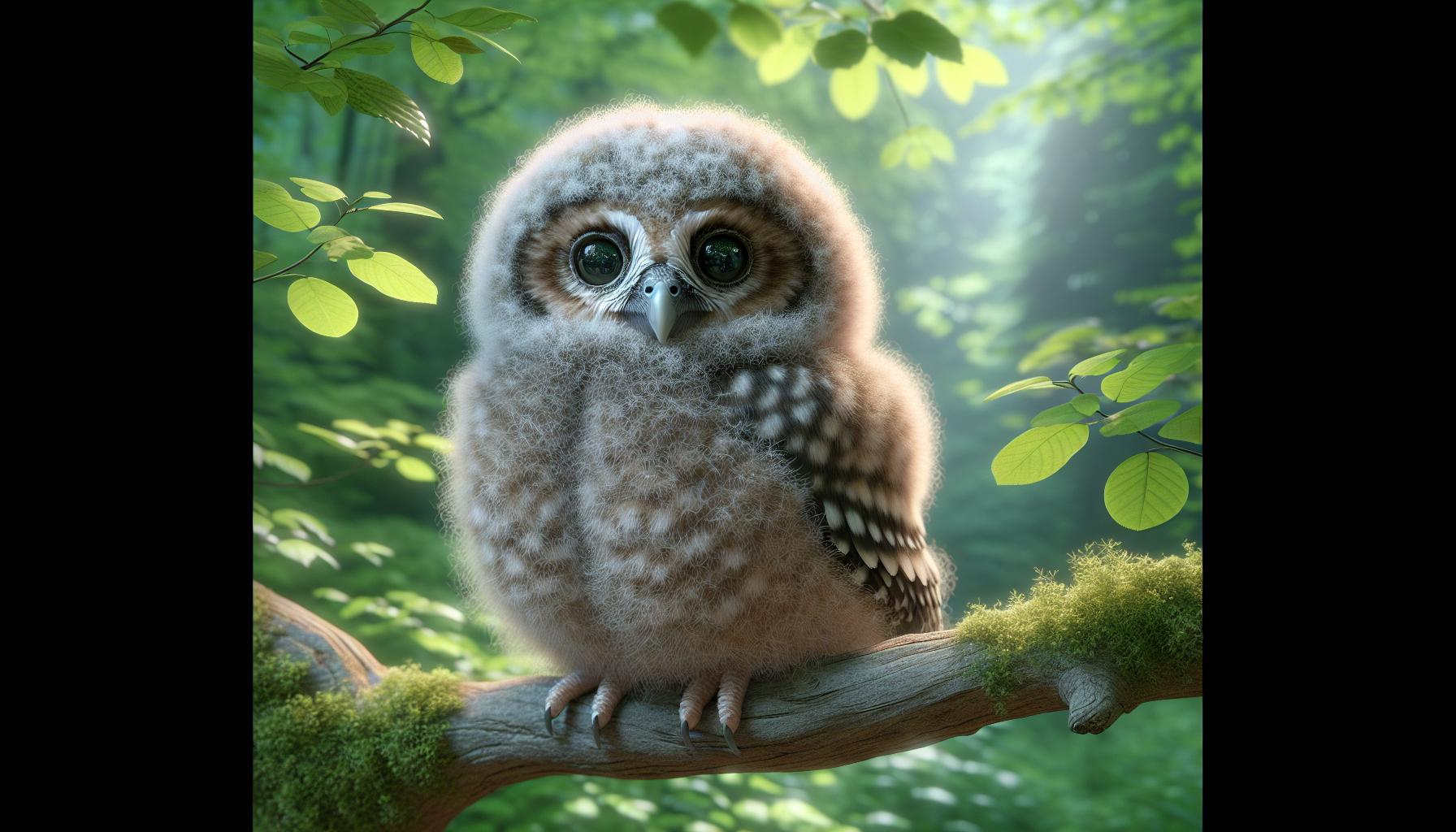When I stumbled upon the baby:smt5vwy3hk4= owl, I couldn’t help but be captivated by its wide eyes and fluffy feathers. These adorable creatures, often referred to as “owlets,” hold a special place in the hearts of many. Their charm and playful antics make them a favorite among wildlife enthusiasts and casual observers alike.
Owls are fascinating birds, and their young ones are no exception. From their unique development stages to their remarkable behaviors, baby owls offer a glimpse into the wonders of nature. In this article, I’ll dive into the enchanting world of baby owls, exploring what makes them so special and how we can appreciate these feathered friends in their natural habitats.
- Baby owls, or owlets, are captivating creatures that are born blind and helpless, relying on their parents for food and protection during early development stages.
- Distinct vocalizations allow owlets to communicate their needs to parents, showcasing their early social behaviors and establishing connections within the nest.
- Feeding habits of owlets involve a gradual learning process where they transition from dependent feeding to practicing solid food consumption, which is crucial for their growth.
- Camouflage and physical adaptations—such as downy feathers and unique facial discs—help owlets blend into their environment, reducing predation risks as they mature.
- Owlets play a significant role in education and conservation, serving as indicators of ecosystem health and inspiring awareness about wildlife preservation efforts.
- Proper care for baby owls encompasses a balanced diet and social interaction, both critical for their healthy development and emotional well-being.
Baby:Smt5vwy3hk4= Owl
Baby owls, or owlets, display fascinating characteristics that captivate bird watchers. These young birds exhibit distinct traits that differ from adult owls, making their study intriguing.
Owlets are born blind and helpless, relying on their parents for nourishment and protection. During their early stages, they undergo rapid physical changes, growing feathers and developing crucial hunting skills.
Key traits of baby owls include:
- Vocalizations: Owlets communicate through various sounds, signaling their needs to parents. Their hoots, chirps, and whistles indicate hunger, discomfort, or calling for attention.
- Feeding Behavior: Parent owls typically bring food, such as rodents or insects, to their young. Owlets learn to eat solid food gradually, practicing tearing and swallowing.
- Social Interactions: Owlets engage in social behaviors, often seen playing or interacting with siblings. These interactions help develop their social skills and establish rankings within the nest.
- Camouflage: Their downy feathers provide excellent camouflage, helping them blend into their surroundings. This adaptation plays a vital role in minimizing predation risks.
Understanding the life cycle and behaviors of baby owls enhances appreciation for their unique roles in ecosystems. Observing owlets in their natural habitats offers insights into their growth and the challenges they face.
Features And Characteristics

Baby:smt5vwy3hk4= owl, or owlets, possess distinct features that make them remarkable. Their unique characteristics contribute to their survival in the wild and shape their developmental journey.
Appearance
Owlets start life with a soft layer of downy feathers, which provide insulation and camouflage. As they mature, their feathers transition to adult plumage, often featuring intricate patterns and colors, depending on their species. Their large, round eyes—including striking hues of yellow, orange, or brown—enhance their ability to see in low light. The beak is short but strong, designed for efficient feeding. Notably, the shape of their faces, often referred to as facial discs, aids in sound localization, enhancing their hunting capabilities.
Habitat
Baby:smt5vwy3hk4= owls inhabit a variety of environments, including forests, grasslands, and urban areas. They typically nest in tree cavities, abandoned buildings, or cliff ledges. These locations offer safety from predators and easy access to food sources. The surrounding habitat plays a crucial role in their survival, as it supports their parents’ hunting activities. Each species prefers specific types of environments, which can significantly influence owlet development and their eventual independence.
Behavior
Owlets exhibit fascinating behaviors that showcase their development stages. Initially, they communicate through soft vocalizations to request food or signal distress. As they grow, their calls strengthen, encouraging more interaction with both parents and siblings. They engage in playful activities that build strength and coordination, essential for future hunting. Sibling rivalry may emerge as they compete for food, establishing social hierarchies. Moreover, they exhibit a unique “branching” behavior, where they practice perching and flapping their wings, preparing for eventual flight.
Benefits Of Baby:Smt5vwy3hk4= Owl

Owlets offer significant benefits, ranging from educational opportunities to enhancing conservation efforts. Recognizing these advantages fosters a deeper connection with wildlife.
Educational Value
Owlets serve as excellent educational tools for both children and adults. Observing their development teaches about avian biology, life cycles, and behavior. Classroom settings incorporate owlets into biology lessons, showing real-life examples of parental care, growth, and survival strategies. Additionally, nature programs and wildlife organizations often use owlets to raise awareness about bird species, ecosystem dynamics, and healthy habitats. Engaging with owlets promotes a sense of curiosity and respect for wildlife, inspiring conservation-minded individuals.
Conservation Importance
Owlets play crucial roles in conservation efforts. Their population health serves as an indicator of environmental quality. Monitoring baby owl populations helps identify habitat issues and ecosystem imbalances. By focusing on owlets, conservation groups raise awareness about the preservation of nesting habitats and the protection of food sources. Supporting owlet conservation initiatives can lead to broader efforts to safeguard entire ecosystems, ensuring the survival of these remarkable birds and their habitats. Protecting baby owls ultimately contributes to biodiversity and the stability of local wildlife communities.
Care Tips For Baby:Smt5vwy3hk4= Owl

Caring for a baby owl, or owlet, requires understanding its unique needs. Focusing on its diet and social interaction promotes healthy development and well-being.
Diet Requirements
Owlets must receive a balanced diet to support their rapid growth. In the wild, parent owls typically feed them small mammals, insects, and sometimes birds. For those caring for an owlet, providing varied protein sources is crucial. Options may include:
- Chopped mice: These provide essential fats and proteins.
- Day-old chicks: Offering complete nutrition, they mimic natural feeding.
- Insects: A good source of protein, caterpillars and crickets can be added for variety.
Feeding should occur multiple times daily, ensuring that it’s age-appropriate and considering the owlet’s size. Hydration must also be emphasized; always offer fresh water, as owlets often hydrate through their food.
Social Needs
Social interaction is vital for owlets. In their natural settings, they learn through interaction with siblings and parents. When raising an owlet, consider these aspects:
- Companionship: Provide a safe environment where the owlet can bond with other birds, facilitating social learning.
- Playtime: Allow regular play with toys or natural items, such as branches or leaves, to develop physical and cognitive skills.
- Human Interaction: Gentle, positive interaction with caregivers aids in acclimating them to human presence, helping prevent stress.
Prioritizing social needs fosters emotional well-being and helps owlets develop essential behaviors for later independence.
Baby:smt5vwy3hk4= owls are truly remarkable creatures that capture our hearts and curiosity. Their unique development stages and behaviors reveal so much about their adaptability and resilience. Observing these young birds in their natural habitats not only enriches our understanding of wildlife but also deepens our appreciation for the delicate balance of ecosystems.
As I reflect on the importance of owlets in both conservation and education, I’m reminded of the vital role they play in our environment. By nurturing a respect for these fascinating birds, we can contribute to their protection and the health of our natural world. Whether through careful observation or active involvement in conservation efforts, every step we take can make a difference.

